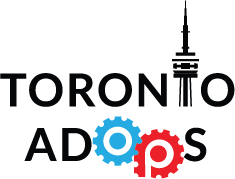Over ten plus years of media buying experience, the most painful term to this day – I am not going to say CTR, even though I am sure you were expecting me to – is benchmark(s).
“These are our benchmarks”. “You’re not hitting the benchmark of our last campaign test”. “You are surpassing our benchmarks”! The last statement is the worst because now the bar has been raised. Constantly bucketing each campaign into groups of goals could be disadvantageous especially when there are so many factors to consider.
Media buyers enjoy working with a multitude of brands since it allows us to see several situations and categories that contribute to our learning. Let’s look at the two most important campaign factors from a media buyer’s point of view – individuals who work on hundreds of campaigns a year.
Most Brands I have worked with will change their creative for each campaign but still refer to their old benchmarks. Why? They have already changed the game. It is inconceivable to keep the same KPI benchmarks but now have a new message, a new image, and a new call to action. How about a different month of the year? I’ll get back to that later. I used to work on a travel client many years ago who ran a campaign for two months with ads that visually showed their resorts, logo and called out promotional pricing on a static 1 frame ad. These display Desktop ads had a great response with an attractive eCPC (with the addition of fraud protection and viewability optimization of course) and a bounce rate around 60%, with time spent over a minute. For their next campaign, they switched up their creative direction and went to an HTML5 ad (4 frames). This time they used images of a forest and neither did their logo nor call-to-action show up until the last frame. You only have one second to catch someone’s attention online. A lot of people, unaware of the brand, were clicking on the image when the forest was present (maybe thinking it had to do with hiking/nature) because they were curious. However, once they got to the site and saw it was for a high-end luxury branded resort they were bouncing. Only a few were catching the 4th frame with the logo in view and genuinely clicking because they liked the brand. This hurt our eCPC and our bounce rate was over 80%, with a much lower time spent.
Now, someone would look at this and not realize how much the creative can make a big difference, coupled with the behaviour patterns of the users who are clicking on the ad. If the ads are misleading, the wrong users will click and bring up your bounce rates. This doesn’t mean the media buy went sour or the nice media buyer is horrible at optimizing this time around. It means we are not looking at the whole picture and getting a true 360 view of each campaign.
I said earlier, “How about a different month of the year?” You may say to me, “Hey, the creative is the same, I expect the same or even better results!” Really? If your brand, for example, is selling turkey and you run a campaign in May and then decide to run the exact tactics and creative in October, do you really think you will have the same results? Thanksgiving falls in October and leads into the Christmas holidays. Maybe the target group will be more inclined to click on your ad because of the state of mood they are in. They are ready to cook a turkey, they have a lot of left overs, and they are craving turkey and pumpkin pie. So yeah, of course, this will surpass our May campaign. Seasonality comes into play. These are just my favourite two I like to point out but there are so many more. (website changes/structure, strategy, etc)
Let’s stop benchmarking and do more deep thinking. There is more to digital metrics/analytics than what meets the eye. Looking at it from all angles can help you better understand your results and take some pressure off your media buyer.
By: Christine Benoit

